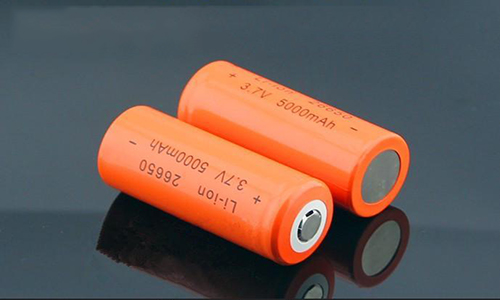What is meant by lithium ion battery?
Nov 22, 2019 Pageview:1743
A li-ion or lithium-ion battery (which is also abbreviated as LIB) is one of the most reliable rechargeable batteries. They are widely used in portable electronics and also in electric vehicles. Today, they are becoming increasingly popular in military andspecial applications as well. This is a technology that was widely developed by Stanley Whittingham, John Goodenough, Rachid Yazami, and Akira Yoshino in the 1970s and 1980s. It was then commercialized by a Sony and Asahi Kasei team under Yoshio Nishi's leadership in 1991.
In these types of batteries, lithium ions migrate from the negative electrode via an electrolyte then to the positive electrode as the battery is being discharged and then moves in the reverse direction during the charging process. Lithium-ion batteries use a lithium compound that is intercalated as a material in the positive electrode and usually graphite in the negative electrode. These batteries are known to have a high energy density, no memory effect, and low self-discharge. However, they can pose a safety risk because they contain flammable electrolytes and can cause explosions and fires if they are damaged or poorly charged. Tech giants, Samsung, some time ago, had to recall the Galaxy Note 7 –after several cases of lithium-ion fires were reported. There have also been several such incidents with Boeing 787 batteries.
The chemistry, cost, performance, and safety characteristics of the lithium-ion batteries vary according to the type of Li-ion battery. Portable electronic devices mainly use lithium-polymer batteries (which uses polymer gel as its electrolyte) and lithium cobalt oxide (LiCoO2) as a cathode material. It provides the battery with a high energy density but poses a little safety risk, particularly when it is damaged. There is also the lithium iron phosphate (LiFePO4), the lithium-ion manganese oxide battery (LiMn2O4, Li2MnO3 or LMO) and then the lithium-nickel-manganese cobalt oxide (LiNiMnCoO2 or NMC) which has a lower energy density, but longer battery life and a lower probability of fire or explosion. These batteries are commonly used for power tools, medical devices, and other functions. The NMC is particularly a leading competitor for automotive applications.
How does lithium-ion battery work?
A battery is composed of an anode, a cathode, a separator, an electrolyte and two current collectors (which are positive and negative). The lithium is stored in the anode and the cathode. The electrolyte transports positively charged lithium ions during discharging from the anode to the cathode and vice versa when being charged through the separator. As the lithium ions move, there is a production of free electrons in the anode which generates a charge in the positive current collector. This electric current flows from the current collector to the negative current collector via the device being powered (be it a mobile phone, computer, or whatever the device is.) The separator then blocks the flow of the electrons in the battery.
Energy density vs. power density
If you have heard much about these batteries, you must have heard these two very common concepts of batteries –the energy density and power density. The energy density is usually measured in watt-hours per kilogram (Wh/kg) and it is the amount of energy that the battery can save in relation to its mass. The power density, on the other hand, is measured in watts per kilogram (W/kg) and it is the amount of the energy that can be released or produced from the battery relative to its mass. To put in perspective, see the battery like a pool. The energy density is like the size of the pool, while the power density determines how the pool can be drained in the quickest of time.
So, how safe are lithium-ion batteries?
Although lithium-ion batteries have been very useful to our lives, they can also be dangerous. Under certain conditions, these batteries may not last long when being stressed or they may have some design defects.
The main issue of lithium-ion batteries has been observed in cases that are related to design failures or flaws in which the internal process initially worked properly.
In some other cases, stress events have led to frequent breakdowns of lithium-ion batteries. For instance, if you notice that the battery is reacting –maybe to overheating or charging at very low temperatures –that may be a problem. This is likely to affect the programming of the battery and may cause it to malfunction and may even lead to a device explosion.
Why do you use a lithium-ion battery?
There are several reasons why lithium-ion batteries are the favored option when it comes to energy storage, and the following are a few reasons.
High Energy Density
High energy density is a major benefit of using lithium-ion battery technology. Electronic devices, like mobile phones, need to operate longer between charges and also consume power as they are being charged –for such devices, there is a need for batteries with a higher energy density. Also, there are many electrical applications, from electric or power tools to electric vehicles that need high-density power storage devices. The higher power density of lithium-ion batteries is a definite advantage. This high-density battery storage is just what the electric vehicles need to properly function.
Self-discharge
A problem with most battery technology is their self-discharge rate. The Lithium-ion cells have a much lower self-discharge rate than the other rechargeable cells like the Ni-Cad and NiMH cells. It is typically only about 5% during the first 4 hours after it is charged, then drops to only 1 or 2% per month.
Low maintenance
An important advantage of lithium-ion batteries is that they require no maintenance to guarantee their performance at an optimal level. The Ni-Cad cells require complete discharges to ensure their memory effect doesn’t affect their functionality. Since this does not affect lithium-ion batteries, the compulsory total discharge or similar maintenance procedures are not necessary.
No priming requirements are necessary
Some rechargeable batteries must be primed when first charged. This is not necessary with lithium-ion batteries.
There are a variety of them available
There are different types of lithium-ion batteries or cells available. This particular advantage of lithium-ion cells or batteries means that there is a battery type for use in any technological application. Some form of these batteries is available for consumer electronics since they provide high current density, while others are available for industrial use, power tools, and even in electric cars.
- Prev Article: Do magnets affect lithium batteries?
- Next Article: Do magnets affect lithium batteries?
Leave Message
Hottest Categories
-
Hottest Industry News
-
Latest Industry News











